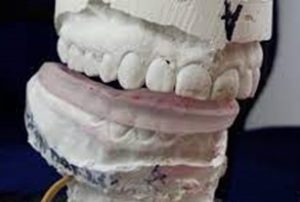

Is the NTI OmniSplint the Universal Soldier of Splint Therapy?
Omni – all: universally omnidirectional
It feels like there are more types of nightguards marketed to dentists and more theories on splint therapy than there are stars in the sky.
Which design works best? Canine guidance? Anterior guidance? Group function? Farrar?
What about a Michigan splint? Pankey? Full coverage? Partial coverage? Anterior deprogrammers? NTI-tss Plus?
Then there are the materials: Hard acrylic? Hard with a soft liner? Milled PMMA? Printed nylon?
The list goes on and on…
Most claims regarding features and benefits are unsubstantiated by evidence. It’s usually just someone in a marketing office putting some shine and sparkle on something a dentist told them during an informal conversation.
So, what do you do? Which should you use?
Why Do We Use Splints At All?
Some dentists prescribe splints to protect teeth and restorations from the damaging effects of bruxism. Some dentists prescribe splints to relieve temporomandibular joint pain or headaches. Most dentists utilize splints for both of those reasons.
But splints aren’t all the same. Differences such as material types and arch coverage are relatively obvious. It’s the function that makes the meaningful difference.
Flat plane, group function full-arch nightguards are what we usually think about when talking splints. They’ll protect the teeth by placing a barrier – usually acrylic – between the arches. No tooth-to-tooth contact = no tooth wear.
 But what about protecting the TMJ, addressing headaches, and reducing parafunctional forces? That’s usually where the anterior guidance ramp or canine rise design comes into play. When the patient bruxes protrusively or laterotrusively, these designs disclude the posterior teeth and reduce muscle contraction intensity.
But what about protecting the TMJ, addressing headaches, and reducing parafunctional forces? That’s usually where the anterior guidance ramp or canine rise design comes into play. When the patient bruxes protrusively or laterotrusively, these designs disclude the posterior teeth and reduce muscle contraction intensity.
But what about when they are just clenching; when the temporalis and masseters contract without the lateral pterygoids being invited to the party? The splint provides patients with a flatter, more efficient surface to clench into and some studies have shown this can encourage patients to clench with even greater intensity than their maximum clenching ability sans splint.
Yes, you read that right – the nightguard can actually increase clenching intensity. Which has the potential to exacerbate other symptoms such as headaches, muscle soreness, and migraines.
 So, how can we protect hard tissue and soft tissue? How can we prevent wear while also reducing forces no matter what the patient’s parafunctional movements are; whether they’re excursive grinders or vertical clenchers?
So, how can we protect hard tissue and soft tissue? How can we prevent wear while also reducing forces no matter what the patient’s parafunctional movements are; whether they’re excursive grinders or vertical clenchers?
The simple answer is the NTI therapeutic protocol. This stipulates instant and continual posterior disclusion in a centric clench and all excursions. The NTI’s proprietary design is the reason it is cleared by the FDA for the prevention of migraines and tension-type headaches. The teeth are protected, and the NTI’s Discluding Element (DE) reduces contraction intensity by ~70%.
But while nearly every dentist agrees with the concept of an anterior programmer for short-term use – as a means to deliver immediate relief for a patient in acute pain – some balk at using the NTI-tss Plus because coverage only extends to the canines.
The NTI OmniSplint – One Splint for Many Uses
What’s in a name? In this case, the OmniSplint name tells the story. It’s one device that covers just about every indication for a splint. It’s the universal soldier.
The NTI OmniSplint addresses the aforementioned concerns while delivering all the benefits of the NTI therapeutic protocol. Many dentists confidently prescribe it for all their patients that exhibit any signs or symptoms of parafunction.

The dual arch full-coverage trays are CAD designed and 3D-printed which ensures they’re low profile, fit perfectly, and are extremely durable. The full coverage design eliminates any concerns about tooth movement and delivers the magic of the NTI therapeutic protocol – the teeth are protected and temporalis contraction intensity is lessened by about 70%.
Migraine – The NTI OmniSplint is FDA cleared for the prevention of medically diagnosed migraine pain. The NTI reduces clenching and bruxing intensity by ~70%.
Tension Type Headaches – It is FDA cleared for the prevention of tension headaches. Its proprietary design eliminates canine and posterior contact in any position.
Tooth and restoration damage due to bruxism – The NTI OmniSplint eliminates tooth contact and prevents wear or fractures due to clenching and bruxing.
TMD or orofacial pain – The NTI reduces clenching and bruxing intensity significantly allowing muscles to relax.
Diagnostic treatment planning – The NTI OmniSplint can reposition condyles to their natural position in the glenoid fossae which is ideal for treatment planning restorative dental procedures.
It’s the universal splint – the NTI OmniSplint. Try it on your next patient with signs of clenching, grinding, headaches, or migraines.